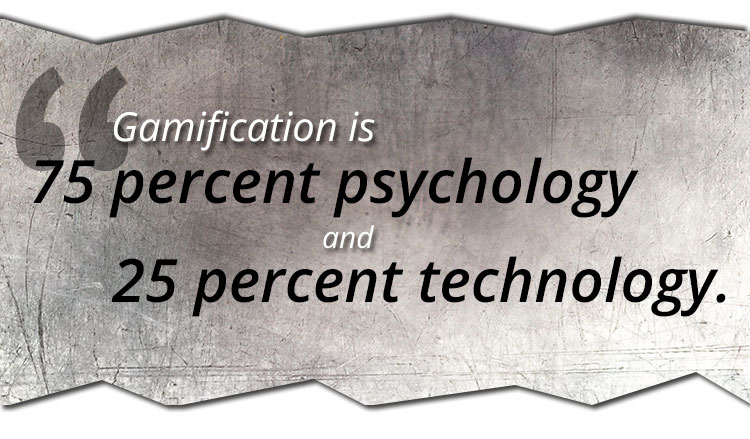Put down the Candy Crush, Farmville, and Trivia Crack for just a second. We have something important to discuss:
How much we love playing games.
From the minute time-wasters that fill the dull moments in our day to the full-fledged immersive gaming experiences that some of us get addicted to, there’s no doubt that games play an important role in our culture. The Internet is abuzz with this concept, with many web developers blurring the lines between work and play in a push towards a new type of marketing: gamification.
Gamification involves applying game-like mechanics and strategies to your website design and UI to promote and reward behaviors that site owners want to see.
While it may seem like something for kids, the effectiveness of gamification has been well established. The enjoyment of linear progression, reward systems, and accomplishment that games provide are deeply ingrained in our psychology.

Receiving recognition for even the most basic of achievements can be a strongly motivating factor, regardless if it’s your boss giving you a thumbs up or a game giving you a badge. It’s human nature—the co-author of Gamification by Design, Gabe Zichermann, noted that “gamification is 75 percent psychology and 25 percent technology.”
What this means for your site is that the addition of a few small tech tweaks may be enough to have a serious impact on your user’s behavior.
Play to Win
Making a game out of your platform can drive user engagement, showcase your brand identity, and turn your users into addicts who keep coming back for more. So, how do you build a game into your site in a meaningful way?
First, let’s cover some of the basic ways that gamification can be used:
- Quests or achievement based goals (the task management app Epic Win based their entire platform around this concept)
- Points and scoring progression systems (Chains.cc and Rewire for iOS and Android, respectively, are a great example of this—both apps utilize a system where goal achievement creates a continuous chain, building momentum as you progress)
- “Levelling up” with user rewards (look no further than Treehouse—their system of reward-based badges function as motivational prizes while signifying to others that the user has learned something valuable)
The idea is that you’re incentivizing your users to take actions on your site that they ordinarily wouldn’t take—or at least, provide positive reinforcement for the actions you want to see.
Gaming for Business
But adding gaming elements to your site isn’t just about creating a fun experience. Your overall goal should be to reinforce the site behaviors that provide benefits to your business model.
Fortunately, gamifying your site organically lends itself to this goal. Adding competitive progression and motivational aspects to your web design will increase time spent on site, page views, and inherent shareability of your material. Games are more fun with friends, after all, and the competitive and social elements inherent to gamification pair nicely with social media outreach and better shareability. This means more eyes on your site, more users engaging with your content, and increased customer loyalty backed by social networking.
If your site relies on email blasts and subscription services, reward those who provide their info! Are you looking for more qualified leads for your marketing funnel? Involve your CTA in your gamified system to encourage users to follow through. The possibilities are endless—all it takes is a little imagination to turn your work into a game and see the benefits that gamification has to offer.
